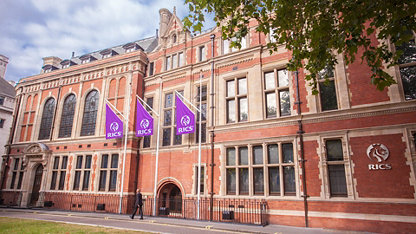As fire and safety reviews of high-rise buildings continue across the country in the wake of the Grenfell Tower fire, pressure is growing from campaigners for the law to become stricter when it comes to protecting residents.
This reinforces the message to housing associations that they need to invest in essential fire protection to safeguard their tenants and provide reassurance. However, installing new fire safety measures is not without its challenges. Minimising disruption, creating something aesthetically pleasing and communicating with a diverse range of residents are all important considerations if a fire safety upgrade is to be successful.
As a social and affordable housing provider, we at Ocean Housing recently reviewed fire safety across our entire estate. Following this, we carried out a £300,000 retrofit of a sprinkler system to our only high-rise building, Park House in St Austell, Cornwall, a 1960s, 36m-high building comprising 67 flats across 12 floors. The work thus cost around £4,500 per unit, including VAT.
It was an appropriate time to install the sprinklers: after Grenfell Tower, residents were very receptive to the installation of further fire safety measures and welcomed the additional safeguards that the new sprinkler system offered.
Nevertheless, there is considerable potential for disruption and disgruntled residents with a scheme of this scale. Credit should be given to the project management team for its organisation and communication with residents, which were essential to the success of the project.

Organisation and communication with residents is key when installing fire safety measures while they remain in their homes
To ensure that all members of the project team were kept abreast of work in progress and forward planning, weekly meetings were held between our installation staff and the tenant involvement team. This gave everyone on the project up-to-date information, and ensured consistency when communicating with residents.
The caretaker was the main point of contact for most day-to-day enquiries from residents and, in many cases he could immediately answer any concerns or queries. However, residents also had access to the project leads at Ocean Housing for any queries that needed additional support.
Viewing the show flat
To give residents a better understanding of the retrofit and how the sprinkler system would work, an unoccupied flat was refurbished and a system installed so they could view the aesthetics as well as the finish. Two open events took place for them to look at the sample installation, one of which was during the evening for those at work during the day. Cornwall Fire and Rescue also attended the open day with a mobile sprinkler unit to demonstrate how the system would be activated in the event of a fire.
With the tenants satisfied about the arrangements, installation took place floor by floor. Residents on each floor were contacted personally by contractors one week ahead of impending works, so that any concerns or questions raised could be addressed directly.
“Credit should be given to the project management team for its organisation and communication with residents, which were essential to the success of the project. ”
Each flat’s system took one to two days to install, and carpenters and decorators swiftly followed up the work to leave a neat and tidy result. Installation could take place while residents were at home, although the show home was made available for those who wanted a quiet space throughout the project. Here, they could make tea and coffee, watch television or receive visitors. The project was completed within six months, on time and within budget. Most importantly, there were no complaints or obstruction from our tenants and leaseholders.
RICS global building standards director, Gary Strong commented: ‘RICS has, with the Royal Institute of British Architects and the Chartered Institute of Building, jointly called for sprinklers to be mandatory in residential buildings more than 11m high in England, and to be retrofitted where possible’.
- Mark Gardner is group chief executive at Ocean Housing
- This article originally appeared in RICS Built Environment Journal February/March 2020














